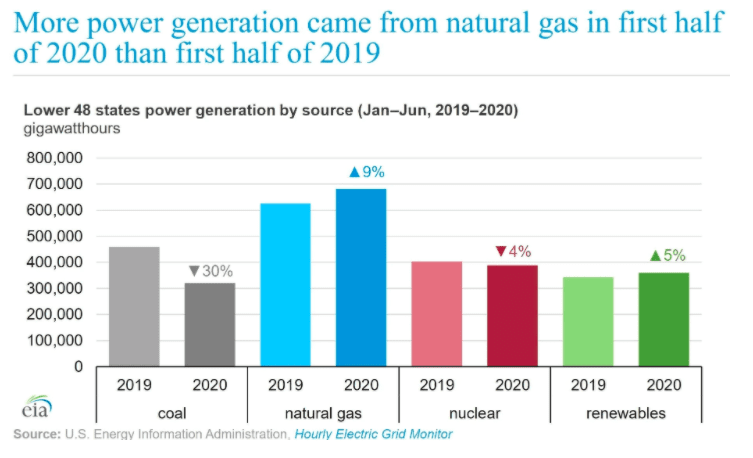After 200 years, one of England's last coal mines is closing
The Bradley Mine in County Durham produces 150,000 tonnes of coal a year, and workers now face an uncertain future.
Today marks the end of an era, with the closure of one of England's last commercial coal mines.....MORE
The Bradley Mine in County Durham has operated for almost 200 years.
But now, after plans to expand the site failed, the open-cast pit that produces 150,000 tonnes of coal a year will close.
It is the worst possible news for the miners who work here, especially when they know that the UK still has a demand for almost eight million tonnes of coal a year.
This demand is mainly satisfied by imports that come from Russia and the US.
The closure means that the Hartington mine in Derbyshire is the last surface mine to remain operational. There are also some small operational underground mines in Cumbria and the Forest of Dean...
And from Power Magazine, August 13:
Coal-Fired Generation Down 30% in U.S., 8% Worldwide
Analysis from a global energy organization said power generation from coal-fired units fell 8.3% in the first half of 2020, with the world’s coal fleet running at less than half its capacity. The drop for U.S. coal generation was more steep, with the U.S. Energy Information Administration (EIA) reporting the output from the nation’s coal units was 30% lower this year compared to the first six months of 2019.
The Ember group, a UK-based think tank, said the global drop was in part due to significantly lower demand for power during the coronavirus pandemic, and coal’s share of generation also was eroded by increased production of electricity from renewables such as solar and wind. Investments in renewable energy continue to increase worldwide as wind and solar power have become competitive with fossil fuel-fired generation.
Ember’s global half-year electricity analysis, released August 13, comes at the same time as the EIA’s latest Short-Term Energy Outlook (STEO), published Tuesday. EIA forecasts 3.6% less electricity consumption in the U.S. in 2020 compared to last year, with much of that drop impacting coal. The agency said it estimates that U.S. coal consumption will decrease by 26% in 2020 compared to a year ago. EIA said about 90% of coal use in the U.S. comes from the power generation sector, driving the 30% drop in electricity output in the January–June period (Figure 1).

1. The
U.S. Energy Information Administration said coal-fired power generation
dropped by 30%
year-over-year in the lower 48 states across the first
six months of 2020. Source: U.S. EIA
This year’s lower numbers come after EIA reported that U.S. coal-fired power generation fell to a 42-year low in 2019, with a 16% drop from 2018.....MORE
Move Away from Fossil Fuels
U.S. utilities continue to move away from fossil fuels to meet government-mandated clean energy targets, and due to economics, as coal becomes increasingly uneconomic. Schuyler Baehman, a spokesperson for Southern Co., earlier this year told POWER the company is “aggressively growing our investment in renewable energy,” noting Southern is the second-largest owner of solar power outside of China.
Southern is among the generation companies that have set carbon-reduction goals. “On an enterprise-wide basis, Southern Co. has set a long-term goal of low- to no-carbon operations by 2050,” Baehman told POWER. “On our path to 2050, we have established a goal of [a] 50% reduction from 2007 levels in CO2 emissions by 2030.”
The Ember analysis said solar and wind produced a new high of 10% of electricity worldwide in the first half of 2020. The report said that even with the large drop in power demand due to the coronavirus pandemic, renewable energy produced 1,129 TWh of electricity in the January–June period, compared with 992 in the first six months of 2019. Ember noted that the percentage of power produced from wind and solar has more than doubled from 4.6% in 2015, the year of the Paris accord on climate change.
Several of the world’s major economies, including the U.S., China, Japan, and India, now generate at least 10% of their electricity from wind and solar, according to Ember. The group said the European Union now gets one-third of its power from renewables, and Britain receives about 21% of its power from solar and wind.
Coal Restarts in Britain
Interestingly, Britain on Wednesday saw the end of a string of 55 consecutive days without the use of electricity from coal. National Grid said it started a coal-fired power station for the first time in nearly three months, as a record-breaking heatwave continues to tax gas-fired units, and has brought wind generation almost to a halt....